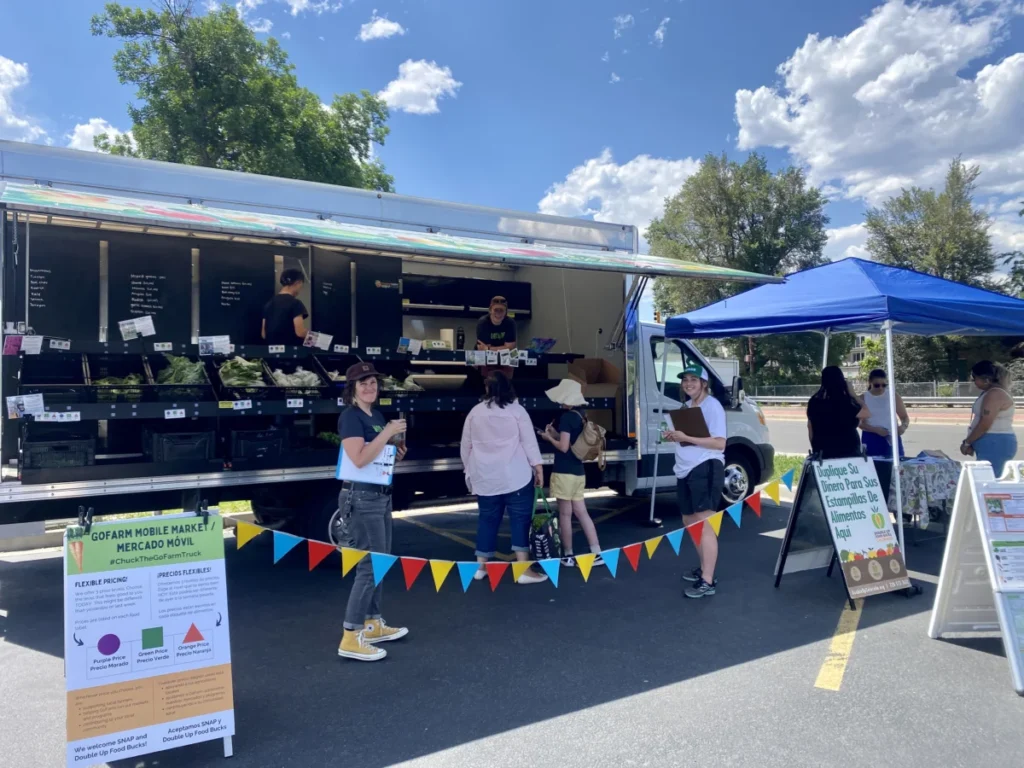This story originally appeared on Modern Farmer.
All summer long, you might see a large truck loaded with fresh, local vegetables hosting a pay-what-you-want farmers market in Colorado’s Golden area. Lovingly named Chuck, GoFarm’s mobile market truck visits low-income neighborhoods, schools, nursing homes and mobile home communities. The truck sells local produce that GoFarm sources from 80 to 90 farms each season, including small urban farms, large family farms and new farmers in its incubator program.
“Our vision is a local food system that is strong, resilient, environmentally sustainable and equitable,” said Virginia Ortiz, executive director of GoFarms.
Ortiz sees GoFarm’s role as a hub that supports small farms and manages the logistics of feeding local communities.
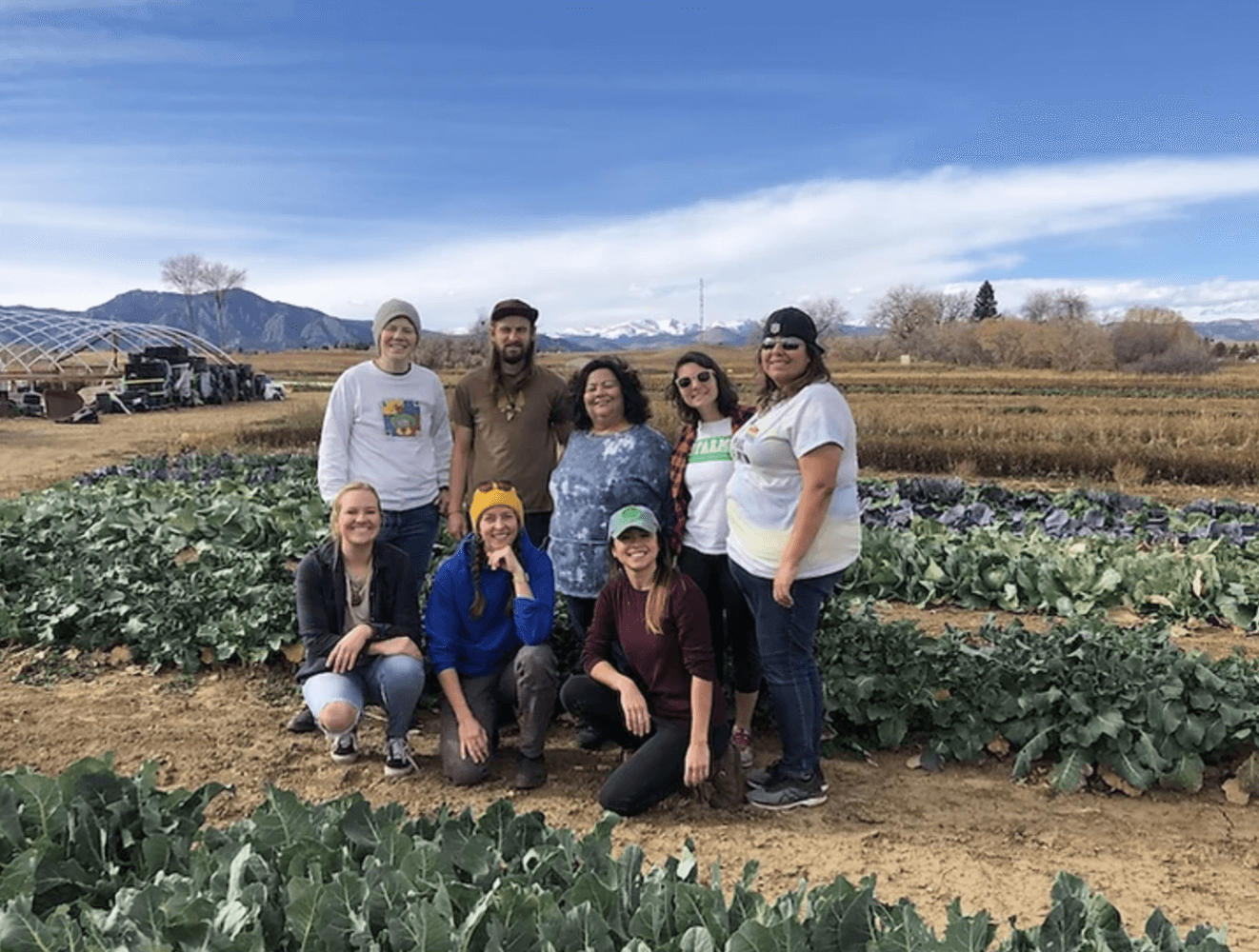 Virginia Ortiz and the GoFarm team on a farm in Colorado. Courtesy of GoFarm
Virginia Ortiz and the GoFarm team on a farm in Colorado. Courtesy of GoFarm
Building community partnerships is a key component, and GoFarm is working with other food access organizations like Hunger Free Golden and JeffCo Food Policy Council to reach more people and build a broader resource base.
Founded in 2014, GoFarm started as a local food share program (essentially a multi-farm CSA). Now, more than a decade later, GoFarm is an organization that trains and develops new farmers to creatively address the problem of how to get affordable, fresh food to communities. As a nonprofit, they are able to raise grants and donations to support their programs and supplement them with revenue from the sale of produce.
GoFarm’s Incubator Farmer Program gives new farmers access to a quarter-acre of land for the duration of the two-year program. Farmers, regardless of their background, receive all the training they need to plan, plant and manage their farm.
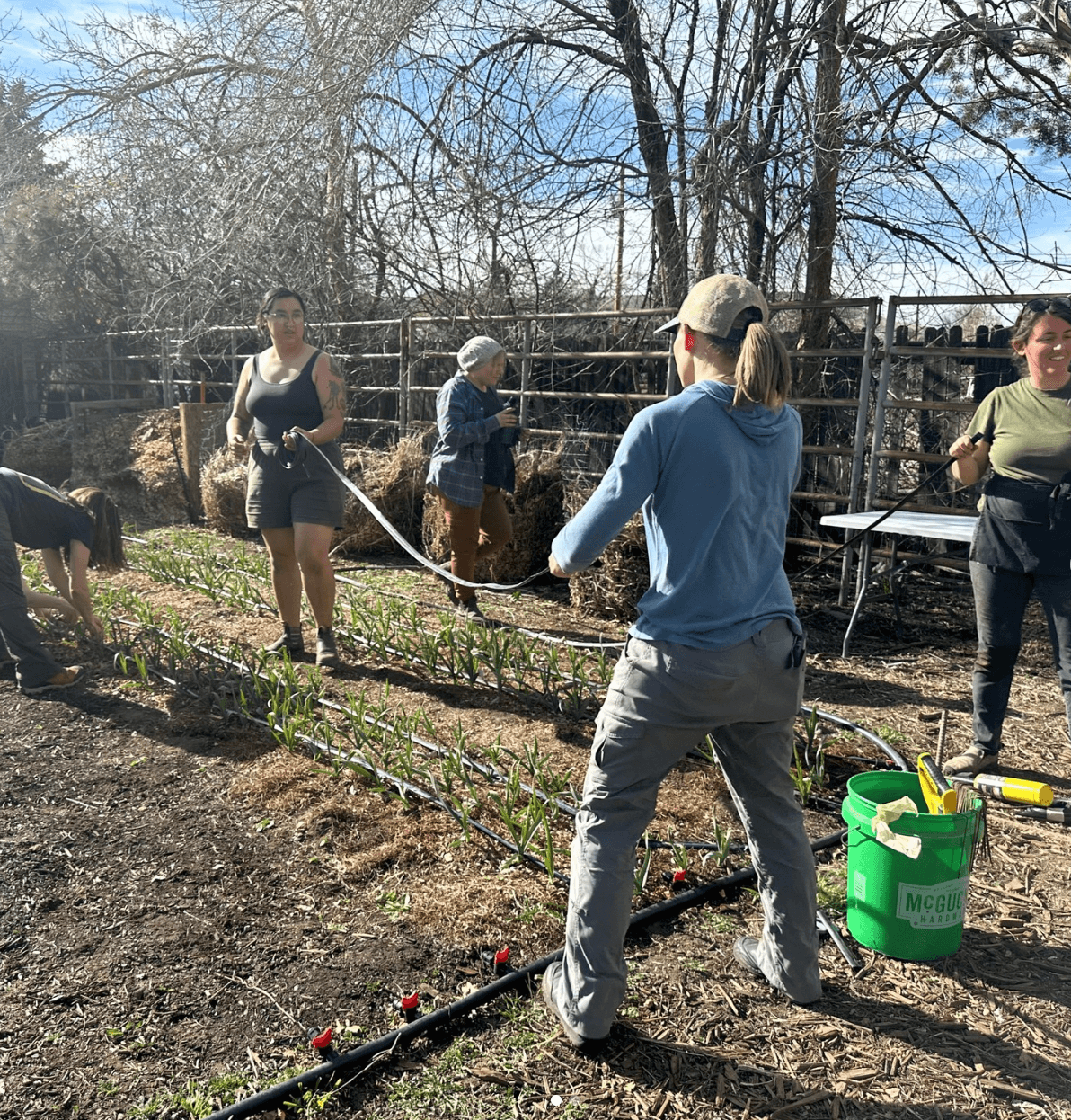 Incubator farmers participating in an irrigation workshop. Photo by Lindsay Beatrice
Incubator farmers participating in an irrigation workshop. Photo by Lindsay Beatrice
“The average age of today’s farm workers is 55 to 59, and we know that half of today’s farm workers will retire in the next 10 years, so that means we need to build a new base,” Ortiz said. But she noted there is a “huge need” for agricultural education.
“One of our goals is to change the paradigm around farm ownership. Currently, there are about 34,000 farms in Colorado, and only 1 percent of them are owned by people of color. But 95 to 98 percent of our farmworkers are people of color, primarily Latinx,” says Ortiz, who comes from a family of generations of farmers and farmworkers. She says she’s proud that 50 percent of her Farmer Development Program participants are people of color, 65 percent are women, and 40 percent identify as LGBTQ+.
Are you overwhelmed by negative news?
Sign up for the Reasons to Be Well newsletter.
Moses Smith of Full Fillment Farms was an engineer who gardened before taking GoFarm’s 20-week course and joining the incubator program. “The key was the Whole Farm Planning course, which really focused on what it takes to grow food,” Smith said.
“One of the biggest benefits is that it not only gives us access to land, which can be very difficult for someone just starting out in farming, but it also gives us a path to market,” says Ann Poteet of Three Owls Farm. While incubator farmers learn how to set up their businesses and create their own markets, they sell their produce to GoFarm.
GoFarm’s community food distribution program provides food to 500-800 members each summer. Members pick up their portions each week from several locations that have GoFarm’s refrigerated shipping containers to store food delivered by farmers. Additionally, GoFarm takes Chuck to Denver and Jefferson counties each week to ensure they are reaching underserved populations who struggle with food insecurity, disabilities, transportation and other barriers, including communities living in designated food deserts south of Golden.
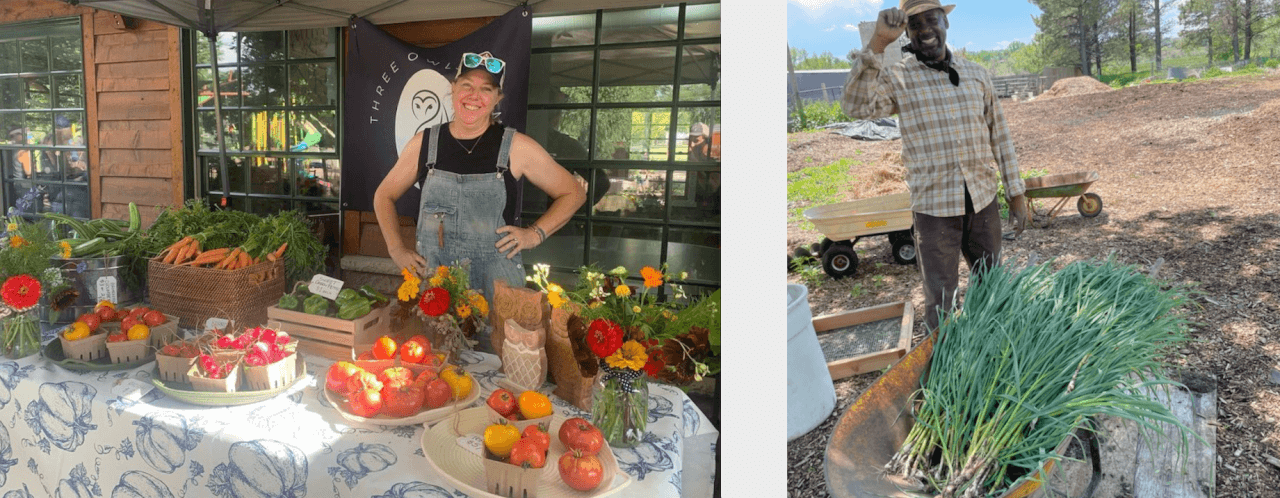 Ann Poteet of Three Owls Farm and Moses Smith of Fulfillment Farm. Courtesy of GoFarm
Ann Poteet of Three Owls Farm and Moses Smith of Fulfillment Farm. Courtesy of GoFarm
“I’m interested in nutritional insecurity,” said Poteat, who was a nurse before starting the farm.
“It was really moving,” Smith says of being able to see her food nourishing the community through GoFarm.
But prices at farmers’ markets can be high because producers need to be fairly compensated for their labor and costs. “We heard often from our customers that access to healthy food is important and that affordability is a barrier,” Ortiz says. So in 2022, GoFarm secured the funding it needed to implement new solutions that would further improve access for the more than 2,600 families it serves.


Become a recurring member now!
Please support our non-profit publication, donate what you can, and join the “Reasons to be Cheerful” community.
participate
Mobile customers can choose from three price ranges to fit their needs for the day’s purchase. For example, bags of mixed greens are marked with three prices: $2 (purple), $3 (green) and $4 (orange). Microgreens are even cheaper, at $1, $2 and $3 per box. Pastured eggs are $3, $5 and $7 per box.
“You become what you eat,” said Kaylee Clinton, who was shopping at a Go-Farm mobile market for the first time. “Eating fresh food makes you feel good.” With inflation hitting grocery stores hard, she said SNAP has made food affordable, and she appreciates that Go-Farm allows shoppers to choose their prices. “I really love it. I think it’s great for everybody.”
“I usually buy either the green or the orange, and when I get oranges I buy them. The pricing flexibility is a good thing,” said Ed Gazvoda, a Go Farm shopper for years. “I want to live a long, healthy, good life, so it’s a personal thing, but I just love food.”
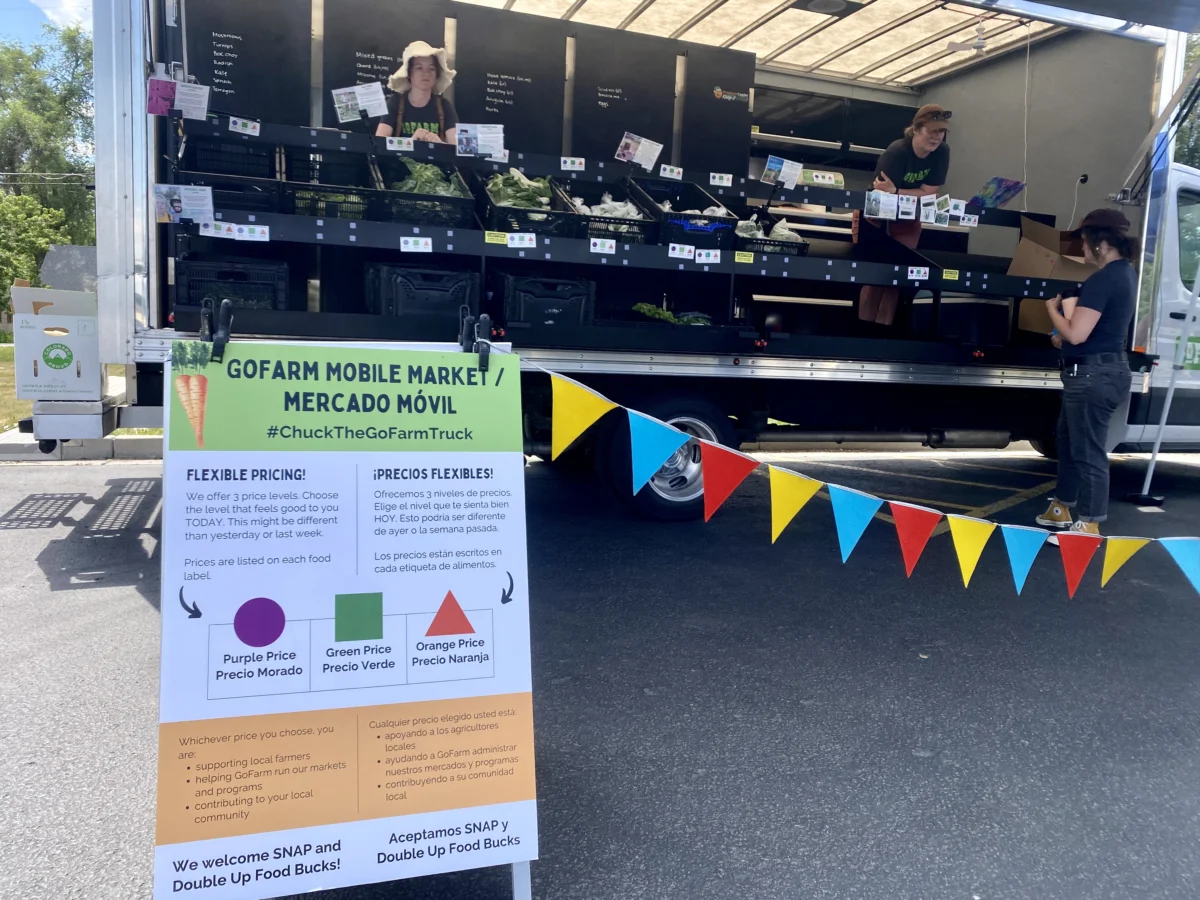 Flexible pricing sign on Chuck’s mobile food truck, courtesy of Lindsay Beatrice
Flexible pricing sign on Chuck’s mobile food truck, courtesy of Lindsay Beatrice
Jess Soulis, director of Community Food Access Programs, emphasizes that accepting SNAP DoubleUp Food Bucks (DUFB) — which effectively gives shoppers a 50% discount — is just one way to make food more affordable. The group also partners with WIC’s Farmers Market Nutrition Program, where participants get credit to spend on shopping. Through markets at Littleton Advent Hospital and the Juanita Nolasco Senior Residence, the program provides shoppers with $10 worth of free produce. SNAP/DUFB accounts for 13% of the mobile market’s sales, but all of these incentives combined make up nearly two-thirds.
The vision keeps expanding. The only constraint? “Infrastructure,” Ortiz says. GoFarm is currently looking for refrigerated warehouse space along the I-70 corridor between Golden and Montbello, near Denver.
“That area is important because we need to provide access to farmers along the Front Range,” Ortiz said. “Having that cold storage space will allow us to easily source from more farmers, distribute more food and serve more communities.”
Modern Farmer is a nonprofit initiative dedicated to raising awareness and inspiring action at the intersection of food, agriculture, and society. Learn more at Modern Farmer.


